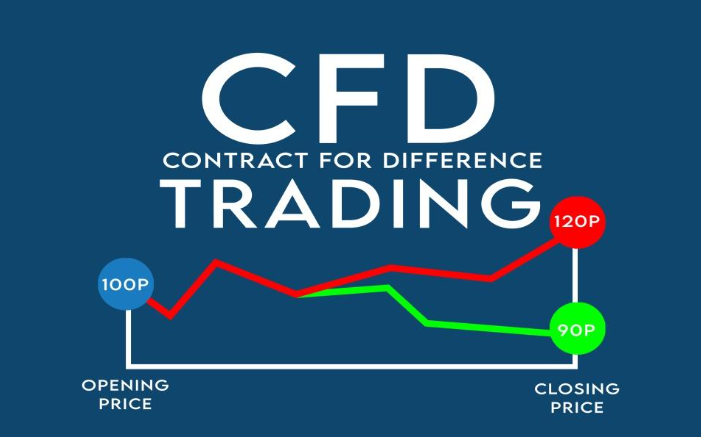CFD vs Traditional Trading: Key Differences Explained

For investors entering the financial markets, understanding the distinction between CFD trading and traditional trading is essential. Both methods offer access to a range of assets like stocks, commodities, indices, and forex, but they operate very differently in terms of execution, ownership, leverage, cost, and risk.
This guide breaks down the core differences between CFDs (Contracts for Difference) and traditional trading so you can make an informed decision based on your goals, risk appetite, and trading style.
What is CFD Trading?
CFD trading is a derivative-based trading method that allows you to speculate on the price movement of assets without owning the underlying asset. When you open a CFD position, you agree with your broker to exchange the difference in price between the time the trade is opened and the time it is closed.
CFDs allow for both long and short positions, enabling traders to potentially profit from both rising and falling markets. Leverage is a key component of CFDs, as it allows traders to control a large position with a relatively small amount of capital.
What is Traditional Trading?
Traditional trading involves the actual purchase or sale of a financial asset. This could include buying shares of a company, purchasing commodities like gold, or owning a bond. In this model, the investor becomes the legal owner of the asset and may receive benefits such as dividends (in the case of stocks) or interest (in the case of bonds).
This type of trading is more common among long-term investors who prefer a more passive investment style with lower risk exposure compared to leveraged derivatives.
1. Ownership of Assets
CFD Trading
With CFDs, you never own the actual asset. You are only speculating on price movements. This means you do not have any shareholder rights such as voting or receiving company reports. In the case of commodities, you never take delivery of the physical product.
Traditional Trading
You legally own the asset when you buy it. For example, if you purchase shares of Apple, you own a piece of the company and are entitled to dividends and voting rights. Ownership gives long-term investors more security and a tangible stake in the asset.
2. Leverage
CFD Trading
One of the defining features of CFD trading is leverage. Depending on the broker and the asset, leverage can range from 1:5 to 1:500. This allows you to control large positions with a small deposit (known as margin). While this can amplify gains, it also magnifies losses.
Traditional Trading
Leverage is rarely available in traditional investing unless you use margin accounts with stockbrokers, which come with strict regulations. Most traditional investors trade using their full capital, making this approach less risky but also limiting potential returns.
3. Long vs Short Positions
CFD Trading
CFD trading is designed for flexibility. Traders can go long (buy) or short (sell) with equal ease. This is ideal in volatile or bearish markets where opportunities exist in price declines.
Traditional Trading
While some traditional markets allow short selling (like borrowing shares to sell), it is often more complex and restricted. Retail investors may face high fees or limited access to short-selling tools.
4. Costs and Fees
CFD Trading
CFD brokers usually make money through spreads (the difference between the bid and ask price) and overnight financing fees if positions are held beyond a trading day. Some brokers also charge commissions on certain assets like stocks.
Traditional Trading
Traditional brokers often charge a flat commission or a percentage fee for buying or selling assets. There are no overnight fees because you own the asset outright. However, holding physical shares or commodities may incur custody or storage charges.
5. Time Horizon
CFD Trading
CFDs are typically used for short- to medium-term trading strategies. Because of leverage and overnight fees, they are not well-suited for long-term investing. Traders often focus on short-term market movements using technical analysis.
Traditional Trading
This method suits long-term investors. You can hold stocks, commodities, or bonds for years without incurring ongoing costs (apart from potential management fees or brokerage charges). Traditional investing focuses more on fundamental analysis and value appreciation over time.
6. Risk Exposure
CFD Trading
The use of leverage makes CFDs inherently riskier. A small market move in the wrong direction can lead to large losses, especially if stop-loss orders are not properly used. Margin calls and forced liquidation are real threats to undercapitalized accounts.
Traditional Trading
With no leverage involved (in most cases), risk is limited to the amount you invest. While market losses can still occur, the absence of margin reduces the risk of losing more than your initial investment.
7. Market Access and Speed
CFD Trading
CFDs offer easy and fast access to global markets, often through a single platform. You can trade forex, commodities, indices, shares, and even cryptocurrencies from one account, usually with instant execution.
Traditional Trading
While traditional trading platforms have modernized, accessing global markets may require multiple accounts or intermediaries. Execution speed can also vary depending on the broker or exchange used.
8. Dividends and Corporate Actions
CFD Trading
Some brokers offer dividend adjustments when you hold share CFDs. However, this depends on the broker and does not always match actual dividends. You also do not participate in corporate actions like voting rights.
Traditional Trading
You receive full dividends and can participate in shareholder meetings and votes. This makes traditional investing more appealing to those seeking income in addition to capital appreciation.
9. Regulation and Broker Trust
CFD Trading
CFDs are offered by brokers regulated under financial authorities like FCA (UK), ASIC (Australia), or CySEC (Cyprus). However, not all CFD brokers are well-regulated, so it’s essential to verify licenses and fund safety measures.
Traditional Trading
Traditional brokers are typically subject to more robust regulation and oversight, especially when offering custodial services for real assets. Investor protection schemes also tend to be stronger.
Which Is Better for You?
The choice between CFD trading and traditional trading depends on your goals and experience level.
Choose CFD trading if:
- You prefer short-term trading and high-frequency opportunities
- You are comfortable managing high risk and using leverage
- You want access to global markets with minimal capital
Choose Traditional trading if:
- You’re focused on long-term investing and wealth accumulation
- You want to own the underlying asset and benefit from dividends
- You prefer a more conservative approach with lower risk
Conclusion
CFD trading and traditional trading serve different types of investors. CFDs offer greater flexibility, lower capital requirements, and the ability to profit in both rising and falling markets. However, they also carry higher risks due to leverage and do not provide ownership.
On the other hand, traditional trading is more stable, better suited for long-term goals, and offers tangible ownership benefits. Beginners may start with traditional investing to build foundational knowledge and later explore CFDs once they have a deeper understanding of market behavior and risk management.
Careful consideration of your financial objectives and risk tolerance is essential before choosing a trading style. Whichever you choose, always ensure you are using a regulated broker and have a sound strategy in place.







